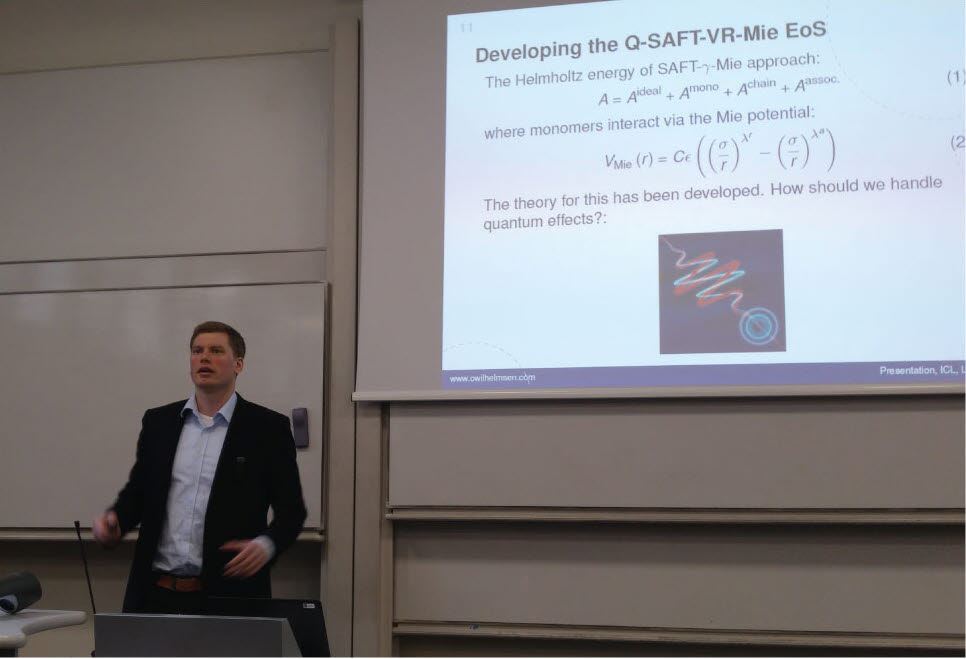The prize is in the fields of Mathematics, Natural Sciences and Technology for his original research into nanoscale bubble and droplet formation.
He hopes that the prize will inspire more young people to become research scientists.
"I'm very proud to be awarded this prize, and I hope it will inspire at least one young up-and-coming researcher to become a research scientist", says Wilhelmsen.
Wilhelmsen carries out research into nanotechnology. A nanometre is one millionth of a millimetre – in other words, very small. Nanotechnology allows us to generate new materials with superproperties that can be applied in medicine and new energy systems.
Wilhelmsen has focused his research on the surface architecture of nanoscopic objects. These surfaces influence the properties of a given material, and by specially tailoring their form and architecture we can also alter these properties.
SINTEF encourages young talent
"I'm very proud that Øivind Wilhelmsen from SINTEF has been awarded this prize!", says SINTEF President Alexandra Bech Gjørv. "I believe that this is recognition for the efforts we have invested in our young and talented researchers here at SINTEF.
"It is also recognition that our close collaboration with NTNU is working well."
"This collaborative relationship has provided Wilhelmsen with the opportunity to immerse himself in basic research, which he has brought with him and used to develop practical industrial applications as part of his work on SINTEF projects", says Gjørv.
Essential research for tomorrow's energy systems
Wilhelmsen and his colleagues focus their research work on what occurs on and along surfaces, and how surficial properties can be exploited both in current and future technologies. This field will have major significance for the development of tomorrow's energy systems.
The results of the research carried out by Wilhelmsen and his colleagues will be used in industrial projects involving energy efficient hydrogen liquefaction.
Surfaces of this type are also found in nature. Wilhelmsen has participated in investigating why Arctic reindeer become more energy efficient as they get colder. The explanation lies in the unique high surface area structure of a reindeer's snout. This research has attracted a lot of international attention. (Link to Gemini article)
A lot we still don't know
"A lot of investment is being made in the entertainment industry, including TV programmes, films and sport", says Wilhelmsen. "So it's understandable that children would rather be actors, reality show celebrities or footballers. However, without research we wouldn't even have television, GPS or mobile phones, Wilhelmsen says.
"There's still a lot we simply do not know. And now we have to accelerate our research efforts if we are to succeed in meeting the huge challenges we face in the fields of climate change, energy and the planet's declining supplies of food and other resources."
"For this reason, it's very good to see that the Research Council offers a prize that rewards young research scientists", he says.
NTNU Rector Gunnar Bovim is also adding his congratulations.
"This prize is very prestigious and represents major recognition both for Øyvind Wilhelmsen and his research teams at SINTEF and NTNU", he says.
"We are enormously proud that two of the three young researcher prizes have been awarded to scientists with an affiliation to NTNU. As well as Wilhelmsen, Professor Terje Lohndal was awarded the equivalent prize in the fields of the humanities and social sciences.
Norway needs more outstanding research scientists, and I hope that this will inspire many talented young people to opt for a career in research ", says Bovim.


